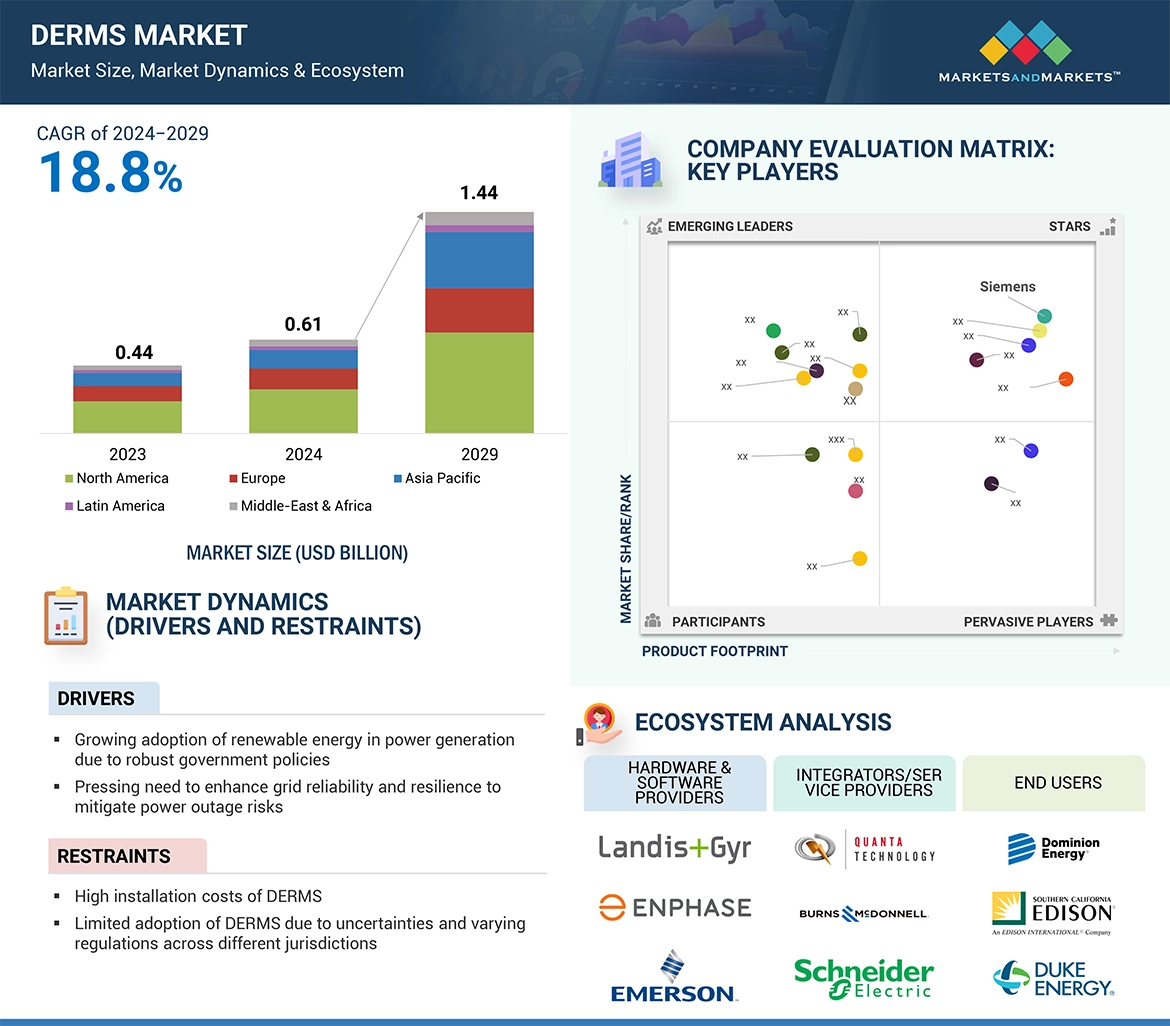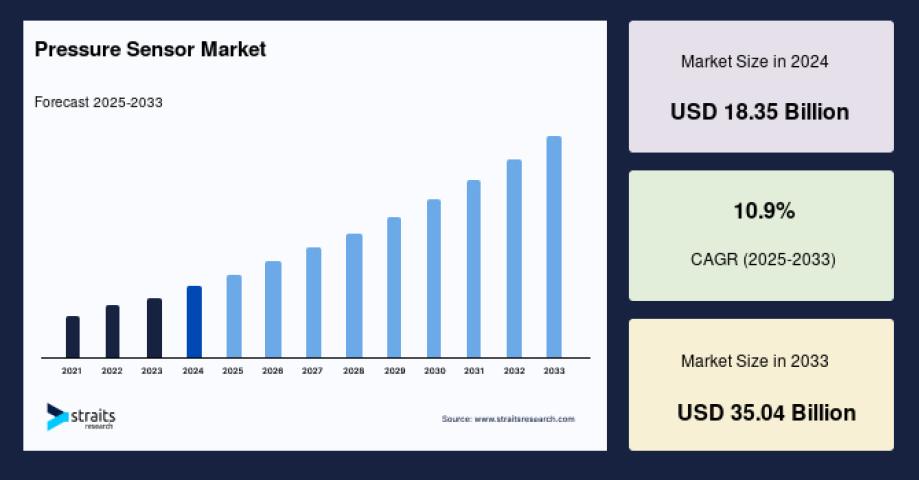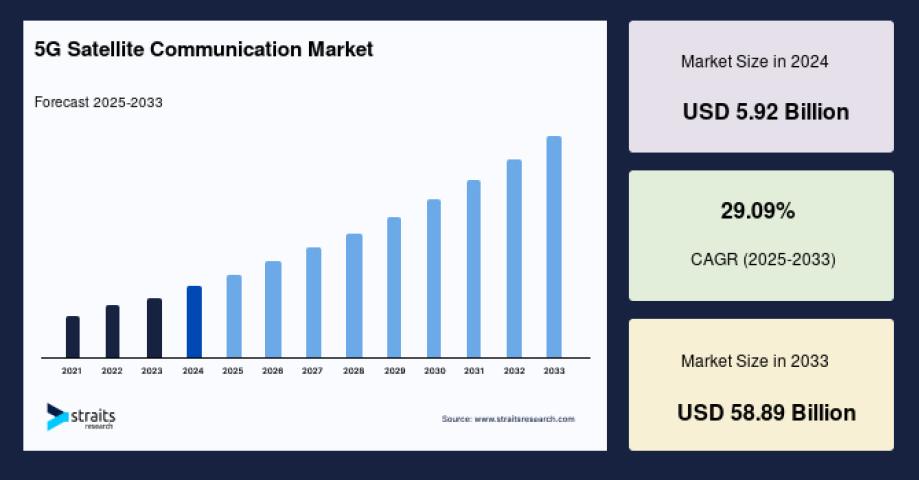According to a research report "DERMS Market by Offerings (Software, Services), Application (Solar PV Systems, Wind Energy Systems, Energy Storage, Combined Heat & Power Systems, EV Charging Solutions), End-User (Residential, Commercial, Industrial) & Region - Global Forecast to 2029" published by MarketsandMarkets, the Distributed energy resource management systems (DERMS) market is expected to grow from an estimated in USD 0.61 billion in 2024 to USD 1.44 billion by 2029, at a CAGR of 18.8% during the forecast period. The market for DERMS is thus growing rapidly. Some of the key factors driving the market are increased adoption of renewable energy sources such as solar and wind power, which are considered significant for the improvement of grid reliability and efficiency. Such a rise is being driven by increased environmental concerns, advances in technology, and government policies that encourage clean energy solutions. Meanwhile, significant investment in smart grid infrastructure and the increasing digitization of energy systems would further spur market growth.
Download PDF Brochure:
https://www.marketsandmarkets.com/pdfdownloadNew.asp?id=256436187
Industrial, by end-user, is expected to be the largest market during the forecast period
Industrial end-user sector dominates the DERMS market, outweighing the commercial and residential segments due to the sheer volume of power consumed in this sector and its critical need for efficient energy management. Manufacturing, mining, and heavy engineering industries require reliable cost-effective power solutions to continue operations at reduced energy costs. Benefits for industries include the optimization of energy consumption, resource integration from renewable sources, and stability of the grid. All this is important in minimizing downtime and ensuring sustainability. Moreover, industrial installations generally have larger budgets and infrastructure readiness to implement DERMS than the commercial and residential sectors, which makes them the leaders in this market.

Solar PV, by Application, is expected to be the largest segment during the forecast period.
The Application segment is further segmented into 6 types: Solar PV Systems, Wind Energy Systems, Energy Storage, Combined Heat & Power Systems, EV Charging Solutions, Other Applications. Solar PV segment is expected to drive the market. The large-scale adoption of solar energy around the world has made it a major source of renewable resources. Their scalability, cost-effectiveness, and clean mode of energy generation have made them highly popular across industrial, commercial, and residential sectors. Also, DERMS play a critical role in optimizing the integration of solar PV systems into the grid, managing variability in generation, and ensuring grid stability. Other drivers of solar PV dominance in the DERMS market include supportive government policies, declining solar panel costs, and the increasing demand for decentralized energy solutions.
Asia Pacific is expected to be the fastest-growing region during the forecast period.
Asia-Pacific is the largest growing region in the DERMS market due to rapid industrialization, urbanization, and increasing energy demand. In addition, regions strongly focus on the adoption of renewable energy, especially solar and wind. Therefore, DERMS becomes necessary for the efficient integration of distributed energy resources into the grid. These policies, subsidies, and investments in smart grid infrastructure by governments in countries like China, India, and Japan are promoting increased energy reliability and sustainability. Furthermore, the region's market growth is further augmented by the penetrating growth of advanced technologies and increasing end-user awareness about energy efficiency.
Make an Inquiry:
https://www.marketsandmarkets.com/Enquiry_Before_BuyingNew.asp?id=256436187
Key Players
Some of the major players in the DERMS market Siemens (Germany), General Electric Company (US), Schneider Electric (France), ABB (Switzerland), and Hitachi, Ltd. (Switzerland), among others. The major strategies adopted by these players include new product launches, acquisitions, joint ventures, and expansions.














